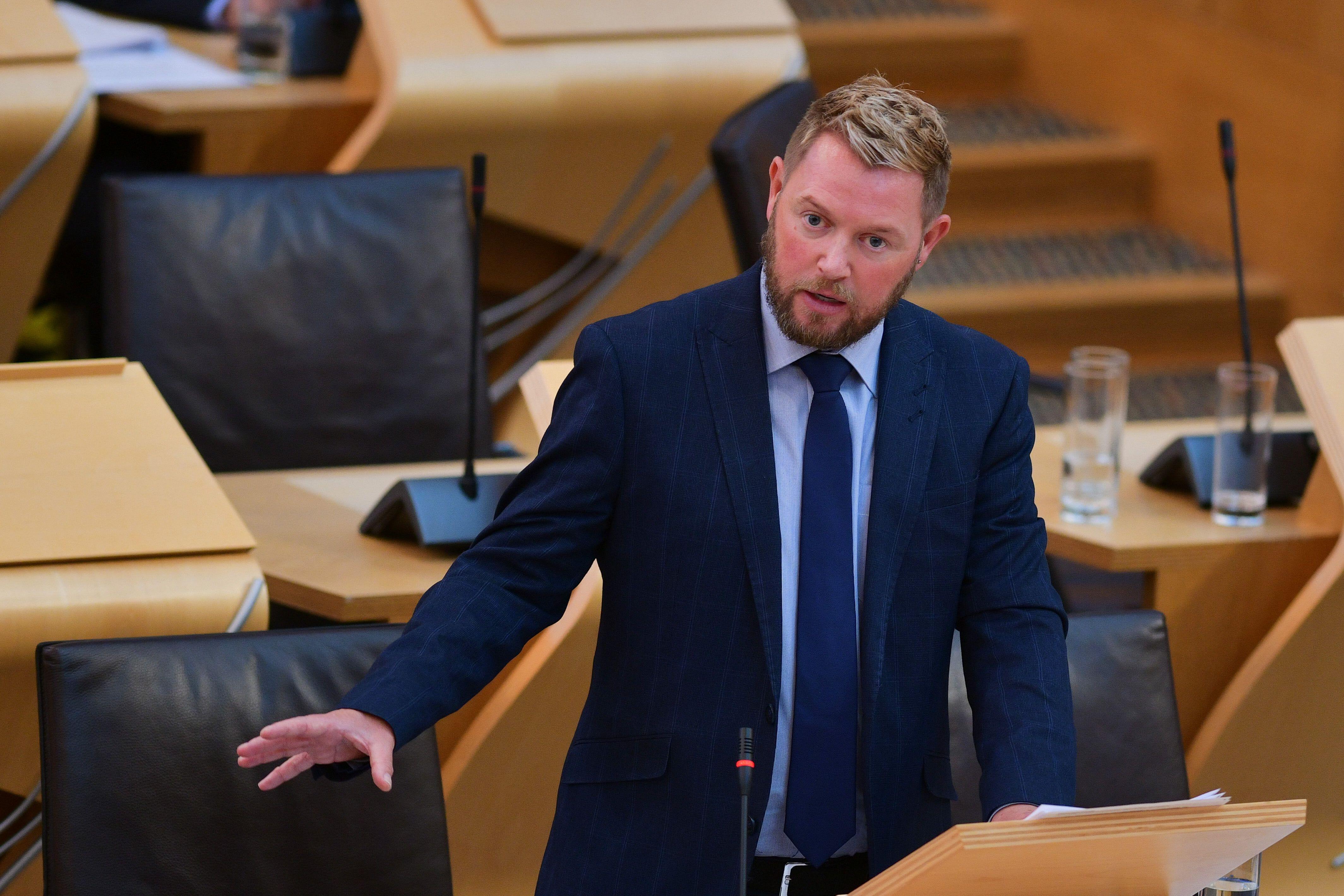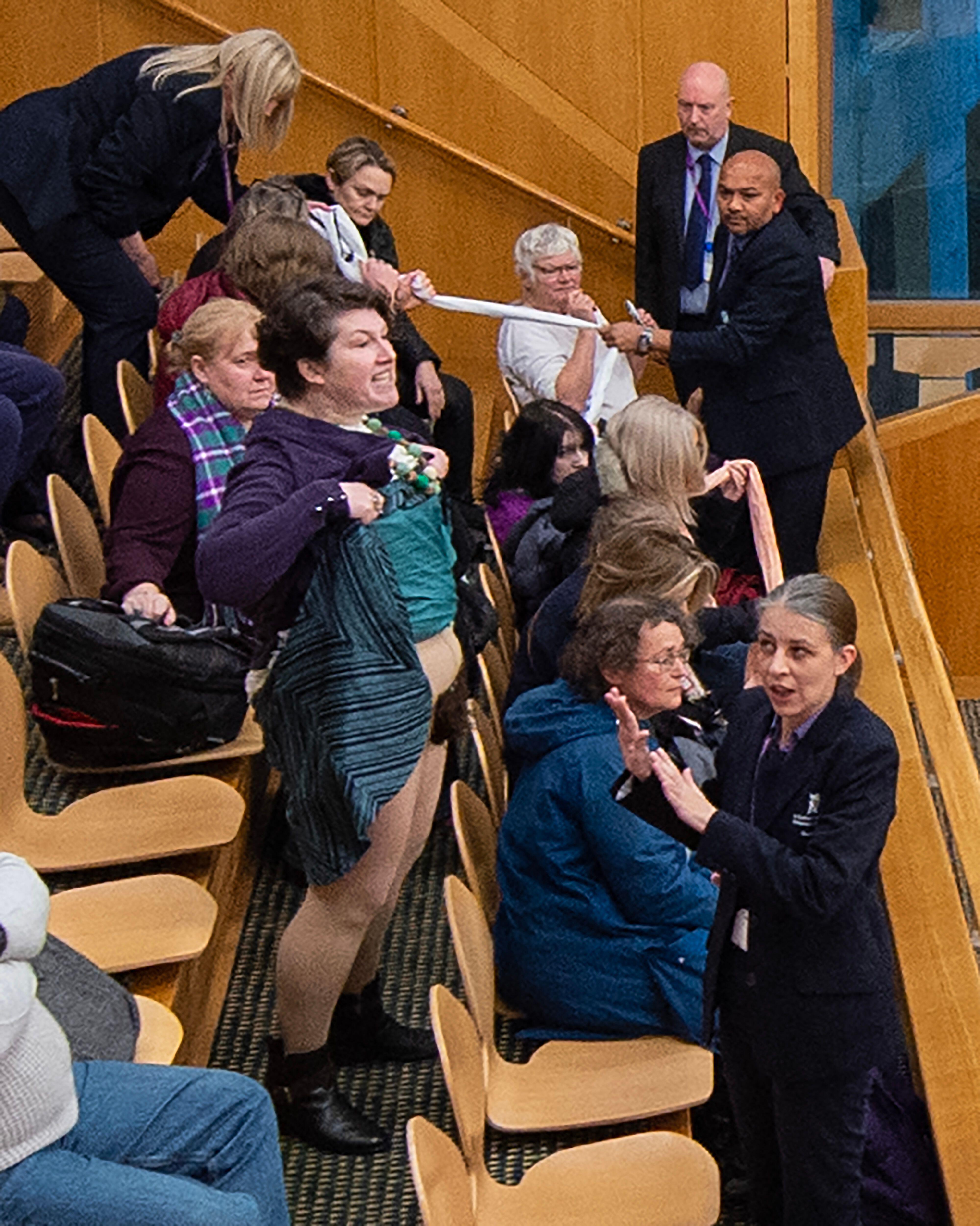Over the rainbow: What does 'lanyard-gate' say about the state of Scottish politics?
Workers at the Scottish Parliament have been told to hang up their rainbow lanyards seven years after being encouraged to put them on in the first place.
Their usage was meant to make the place a welcoming, inclusive environment. But after a string of rows over feminist pin badges and suffragette scarves, multi-coloured rainbows are out and parliament-issued purple is in. Showing the stripes, it has been decided, has become divisive.
There is perhaps an irony in the fact that what began as an inclusionary gesture in 2017 – a move to support the delivery of the four-year Scottish Parliamentary Service (SPS) diversity and inclusion strategy – is now deemed exclusionary by an organisation whose code of conduct emphasises the values of “stewardship, inclusiveness, excellence” and “respect”. But repeated questions about staff ‘agendas’ linked to the febrile debate around legislation on equalities, specifically the passage of gender recognition reforms, means bosses at SPS, which is independent of government, now want to minimise the “risk of perceived bias”.
It is surely a sign of our charged political climate that we have got here at all. And the response to the change, which affects not MSPs or their staff but only SPS employees and contractors, has managed to upset some figures on both the right and left and highlight just how tied-up in symbolism our politics has become. “The Scottish Parliament’s hard-won reputation for inclusivity risks being undermined,” said the Scottish Greens. “Lanyard-gate,” commented Conservative MSP Jamie Greene, the co-convener of the parliament’s cross-party LGBT group, “is the new identity politics battle.”
.jpg)
Maggie Chapman MSP | Alamy
Since its reopening 25 years ago, the Scottish Parliament has often been positioned as a people’s parliament – more accessible, friendlier and less stuffy than its counterpart in Westminster. But as issues of identity have become more prominent in our politics, argument has arisen over the visibility of social and political groups and movements. As a society, we increasingly wear our opinions on our sleeves and senior SPS managers, Holyrood was told, are “trying to work their way through that”.
Though it has widely been reported as a “rainbow lanyard ban”, the new policy is broader than that, covering “personalised” accessories with some key exceptions. Pronoun badges, poppy pins and tags related to specific roles, such as that of first aider, are still allowed. The same is true for badges for recognised trade unions and sunflower cords to denote a hidden disability, so long as a purple one is also worn.
The update follows a review to which Lorna Foreman, Holyrood’s head for people and culture, committed near the end of 2023. It was around that time that a woman visitor attending a session of the Citizen Participation and Petitions Committee was asked to remove her For Women Scotland (FWS) badge by a security guard who said it represented a lobbying organisation.
One year earlier, the same woman had been ejected from an equalities committee meeting on transgender rights reforms for wearing a scarf in the green, white and purple of the women’s suffrage movement – an act that later drew an apology from Presiding Officer Alison Johnstone. A spokesperson for the Scottish Parliament said the badge request was made “in line with the parliament’s visitor behaviour policy, which prohibits the display of banners, flags or political slogans, including on clothing and accessories”. During that session, some MSPs on the committee had been wearing rainbow lanyards, leading some observers to ask why one was permissible when the other was not. “The action taken was an error,” Johnstone later told the chamber.
In response to the badge incident, FWS said it was not on the lobbying register and suggested that groups which had “expressed opposition to government policies on the self-identification of sex such as the Gender Recognition Reform Bill” were being targeted. Answering a question in the chamber last month, Scottish Labour MSP Claire Baker, a member of the Scottish Parliament Corporate Body, confirmed that five badges were among the 26 items to be taken from visitors to Holyrood since March 2022, but said “the reasons for the retention of those items are not held”.
However, Tory MSP Tess White, wearing a suffrage-striped lanyard at the time, said “policies of so-called inclusion are leading to the exclusion of women” and the visitor code of conduct had been “subjectively” enforced. “It has become the case that there is a rule for some but not for others,” she stated.
.jpg)
Tess White MSP | Alamy
The new policy, Foreman said in her message to SPS staff, is designed to avoid claims of double standards by members of a service which is avowedly apolitical. “We take immense pride in our values and culture by providing a positive, inclusive working environment,” she stated, but “wearing personalised lanyards and/or pins and badges showing support for social movements and towards campaigns or organisations” has led some to consider that the SPS “cannot be impartial when supporting the parliament to debate government policy, proposed new laws and current significant societal issues.”
But there is acknowledgement within the parliament that the rule change has been interpreted by some as political in nature, particularly since its timing coincides with news of its withdrawal from the Diversity Champions scheme run by LGBTQ+ charity Stonewall, whose Scottish arm is on the lobbying register.
The programme supports the implementation of diversity and inclusion policies and costs around £3,000 per year. Former City of Edinburgh Council leader Adam Nols-McVey called that a “terrible decision which undermines the parliament’s commitment to its LGBT+ staff”. Parliament officials said they had informed Stonewall that membership would not be renewed in February, but the news emerged one week after the new lanyard policy was announced.
While the group Scottish Lesbians said it looked forward to having “clarity” on apparel, some of those working for MSPs raised concerns. “It isn’t ‘bias’ to stand with a marginalised group, they aren’t a ‘side’ or a political agenda,” one staffer said, questioning “what message do we send to other corporate non-political organisations”. Another said it feels “gross” to have “one rule for building staff and another rule for the rest of us”. There was condemnation, too, from Scottish Lib Dem leader Alex Cole-Hamilton, who said the rule “takes neutrality of parliament staff to the point of overreach”. “I don’t understand this, nor do I agree with it,” he tweeted, while Maggie Chapman of the Scottish Greens dubbed it a “regressive step”.
“Sadly, it seems that in trying to keep everyone happy, they’re keeping no one happy,” MSP Greene commented. “The new parliamentary rules designed to create fairness and equality have managed to achieve quite the opposite. Either let everyone wear whatever they feel comfortable with, assuming it’s not offensive or illegal, or let no one wear anything non-standard at all”.

Jamie Green MSP | Alamy
Professor Jennifer Lees-Marshment, who teaches political marketing and management at the University of Dundee, said there are well-established principles at play. “In political marketing communication, extensive strategic thought is integrated into the visual aspects of any communication,” she told Holyrood, and “whilst much of the discussion about political branding focuses on politicians, especially the party leaders, parliament itself has its own brand to uphold”.
“Parliament needs to uphold neutrality in its own symbolism to maintain brand perception that it supports and safeguards the space for elected politicians to engage in political and partisan debate,” she continued. “The role of parliamentary staff is to uphold rules and procedures to enable that debate to happen, rather than become involved in it themselves. Their personal views, their personal circumstances, are not supposed to be on show in these particular roles. Whilst the colour of a lanyard may seem like a minor thing, it is a staff badge, and thus part of staff uniform.”
Anyway, she cautioned, the political and social agenda is subject to change. “Whilst some such messages may have mainstream public support right now, allowing expression on one issue enables future expression of alternative positions that may not be as well received,” she said. “We need parliament to be a place where there is freedom of speech for those whom the Scottish people have elected to speak for, and represent, them; politicians who, thanks to the right to free and frequent elections, can be changed over time.”
The obligation for the SPS workforce to avoid being seen to engage in parliamentary debate “does not seek to curtail or suppress” anyone’s identity, Foreman told staff. One well-placed source told Holyrood that if the optics are different, cash-strapped political parties who have worked to leverage social issues have a share of responsibility.
“It looks like the parliament are making political decisions, but they are actually trying to remove themselves from the political debate,” the source said, adding that some political parties have actively worked to keep issues of identity high on the agenda “because they don’t have any money and they want to make themselves look different”. “It became political in 2017 when they started encouraging staff to wear rainbow lanyards because they were allies,” the source said. “It is an expression of a movement in a professional parliamentary role.”
Clarity, the source said, is a must against a backdrop of the frequent protests which have led to heightened restrictions on visitors to the parliament and should apply to them too. Who can forget the flash of the merkin from one opponent to the Gender Recognition Reform (GRR) Act as voting reached its end in December 2022?

Activist Elaine Miller protests in the Scottish Parliament | Alamy
There was outrage in 2021 when the grounds of the Scottish Parliament were designated as a protected site, giving police additional powers to intervene in “disruptive” demonstrations under UK-wide national security rules. The change brought Holyrood into line with the House of Commons and the Welsh Senedd, but also drew warnings from organisations like Amnesty International about the potentially chilling effect on the public’s ability to make its voice heard.
In the end, it hasn’t stopped activists scaling the roof, as some recently have in support of Palestine, or marching a coffin to the public entrance, as others did in opposition to new hate crime laws. And while the causes are different, discourse around the accessory rules – about visibility, inclusion and allyship – could be seen as part of the same conversation.
It’s understood that initial discussions on a review of relevant policy have taken place between parliament bosses and the SPCB. But the lanyard example shows that writing a code that covers the bases and is acceptable to all will be a challenge, Holyrood was told, and the shifting tenor of protest may do so too.
“It’s clear that you can’t bring banners or flags into the parliament, and you don’t unfurl stuff in the chamber, that’s longstanding” a source said, “but now people are showing political positions through things like T-shirts. When we had the GRR debate, that’s when it all kind of kicked-off.
“We need a more nuanced policy that’s moved beyond ‘you can’t bring in a poster’, but how do we come up with that?”
Holyrood Newsletters
Holyrood provides comprehensive coverage of Scottish politics, offering award-winning reporting and analysis: Subscribe